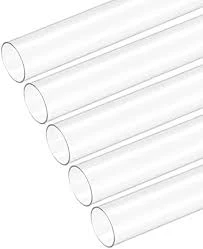Aug . 17, 2024 07:48 Back to list
High-Density Polyethylene Perforated Sheets for Versatile Applications
Understanding Perforated HDPE Sheets A Versatile Material for Various Applications
High-Density Polyethylene (HDPE) is a popular polymer known for its excellent strength-to-density ratio, resistance to impact and chemicals, and versatility across various applications. Among the innovative variations of HDPE is the perforated HDPE sheet, which combines the benefits of standard HDPE with additional functionality afforded by its perforations. This article explores the characteristics, manufacturing process, applications, and advantages of perforated HDPE sheets.
Characteristics of Perforated HDPE Sheets
Perforated HDPE sheets are characterized by a series of holes or perforations distributed throughout the material. These perforations can vary in size, shape, and pattern, offering customization depending on the intended use. The sheets maintain the robust nature of traditional HDPE, making them durable and suitable for outdoor applications. Additionally, they exhibit excellent resistance to extreme weather conditions, UV radiation, and various chemicals, which further extends their usability.
The lightweight nature of HDPE sheets simplifies their handling and installation, making them attractive to a wide range of industries. The porous nature of the perforations allows for airflow, drainage, and filtration, making these sheets ideal for specific applications where such properties are necessary.
Manufacturing Process
The production of perforated HDPE sheets involves several stages, starting with the extrusion of high-density polyethylene material into flat sheets. Following this, the sheets undergo a perforation process, which can be achieved through various methods, including mechanical punching or laser cutting. These methods create uniform holes across the sheet as per design specifications.
After perforation, the sheets may be subjected to additional treatments, such as surface texturing or UV stabilization, to enhance their performance in particular environments. The final product is then cooled, cut to size, and prepared for distribution, ensuring that it meets quality standards and customer requirements.
Applications of Perforated HDPE Sheets
perforated hdpe sheet

The versatility of perforated HDPE sheets allows for their use in numerous industries and applications, including
1. Agriculture Perforated HDPE sheets are widely used in agriculture for greenhouse covers, irrigation systems, and drainage solutions. Their ability to allow water and air penetration while preventing soil erosion makes them ideal for these applications.
2. Construction In construction, perforated sheets are utilized for partitions, privacy screens, and even as components in concrete forms. Their lightweight and easy-to-handle nature make them a preferred choice for builders and architects.
3. Retail and Displays Many retail environments utilize perforated sheets for displays and shelving units. The perforations allow for flexibility in display arrangements and can enhance ventilation for products that require airflow.
4. Environmental Solutions These sheets play a crucial role in environmental management, particularly in waste management systems, as they are effective in filtration and drainage applications. Their chemical resistance also makes them suitable for use in landfills and wastewater treatment facilities.
Advantages of Perforated HDPE Sheets
The benefits of using perforated HDPE sheets are numerous. Their inherent strength and durability reduce the need for frequent replacements and repairs. Moreover, they are lightweight, which translates to lower shipping costs and easier installation.
Perforated HDPE sheets also offer customization in terms of hole size and pattern, allowing manufacturers and users to tailor the material to specific requirements. Their resistance to moisture, chemicals, and UV rays ensures longevity, making them a cost-effective solution in the long run.
In conclusion, perforated HDPE sheets represent a unique and functional material suited for diverse applications across multiple industries. Their combination of durability, versatility, and customization options positions them as a vital resource in both traditional and innovative projects. Whether for agricultural use, construction, or environmental management, perforated HDPE sheets are an essential material that can meet the demands of modern applications effectively.
-
HDPE Steel Belt Reinforced Spiral Corrugated Pipe | High Strength
NewsAug.17,2025
-
HDPE Pipe Fittings: Durable, Leak-Proof Solutions
NewsAug.16,2025
-
Premium CPVC Sheet: High-Temp & Chemical Resistant Solutions
NewsAug.15,2025
-
Durable PPR Pipe for Hot & Cold Water Systems - Easy Install
NewsAug.14,2025
-
Durable HDPE Sheet | Versatile & Impact-Resistant Plastic
NewsAug.13,2025
-
Premium PVC Soft Sheets: Clear, Flexible & Durable
NewsAug.12,2025

